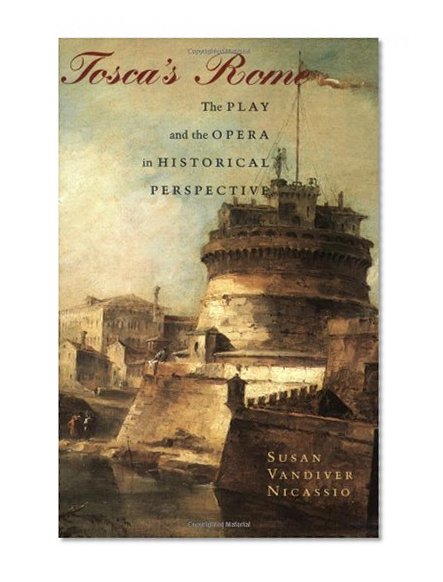Tosca's Rome: The Play and the Opera in Historical Perspective / Susan Vandiver Nicassio
| List Price: | |
Our Price: $18.52 | |
|
For Bulk orders
| |
|
Used Book Price: $8.99 | |
| Tosca's Rome: The Play and the Opera in Historical Perspective / Susan Vandiver Nicassio | |
| Publisher: The University Of Chicago Press | |
| Availability:Usually ships in 24 hours | |
| Sales Rank: 1189372 | |
|
Rather than make pedantic points about historical inaccuracies, Nicassio untangles the far more revelatory layers of creative misprision that both Sardou and Puccini (together with his two librettists Giacosa and Illica) committed in choosing to anchor Tosca so firmly in the milieu of the French revolutionary/Napoleonic era, in which corrupt state power and the Church are perceived as dual aspects of a superstitious ancien régime. The result is to plug into a powerfully resonant myth of cultural patterns that also managed to ignite Puccini's self-avowed "Neronic instinct." (Verdi, the author notes, had likewise declared a desire to operatize Sardou's play, had he not already entered into retirement.) Ultimately, for Nicassio, Tosca is a "20th-century story, and part of its power lies in its preview of totalitarianism." It's a pattern, incidentally, that Nicassio believes is itself beginning to face a paradigm shift in our own time--though that is an issue beyond the scope of her book.
In developing her portrayal of the historical context of Rome as each of the chief characters might actually have experienced it, Nicassio pulls off a magnificent coup of cultural analysis. She offers information about artistic and musical life with legal history, theology, and shifting attitudes toward the use of torture--all woven together into a marvelous polyphony. Her lively, jargon-free style and common-sense approach ensure that these exegeses are anything but dry, while numerous first-hand sources as well as intriguing visual documents add further layers to our picture of a complex, labyrinthine Rome. She's particularly interesting on the differences between Sardou's standard-issue anticlericalism and Puccini's rather more contradictory attitudes toward religiosity.
A good half of the book is taken up with close readings and elaborations of each scene in the opera, with wide-angle ruminations on its overall structure. Nicassio proves herself a very astute music critic as well as historian, commenting, for example, on the contrast between the music given to the two lovers and Scarpia's sound world: "One could even say that the musical conflict of the opera is between declamation and lyricism." She considers the meaning of Puccini's shift from the overtly (and stereotypically) political angle of Sardou to a more "existential" approach. On the controversial choice to end the opera with the melody from Cavaradossi's "E lucevan le stelle," Nicassio offers a particularly intriguing interpretation, positing that Tosca is, ultimately, a work about "the illusory nature of happiness" in which the "great world of politics and institutions is indifferent to that happiness." The intersection that Nicassio suggests between historical specificity and universal artistic resonance is more food for thought in a book that provides a veritable feast. --Thomas May
Now you can buy Books online in USA,UK, India and more than 100 countries.
*Terms and Conditions apply
Disclaimer: All product data on this page belongs to  .
.
No
guarantees are made as to accuracy of prices and information.










